Analyzing modernism with a multi-faceted view in the 2014 Spanish Pavilion at the Venice Biennale
By Bustler Editors|
Thursday, Jun 19, 2014

Related
The Spanish pavilion "Interior" at the 2014 Venice Biennale conveys its multi-layered concept with an enticing labyrinth-like design. Visitors can formulate their own experience as they walk through the open maze, which is "guided" by large images of contemporary and traditional Spanish architecture.
With Iñaki Ábalos as lead curator and designed by Sio2 Arch (formerly F451arquitectura), the pavilion is set up as an interactive exploration of Spanish modernity in the last century, mixed in with the influence of digital technology, comparing the traditional to the contemporary, and so forth.
Learn more about it with photos and the full project description below.
Project description:
"Interioromy
Lluís Ortega
Contemporary architectural practice is a relational exercise, a practice that deals with power. As such, it needs to be constantly fed by knowledge and skills that enable it to increase its potential. In our increasingly complex global environment, we need to develop transformative—not rhetorical—operative capabilities, design projects which can integrate political, economic, social and energy aspects and, above all, mediate their actions in cultural terms.
1. Interior is designed with polysemic material that facilitates an opportunistic approach to Spanish modernity, and its cultural absorption with a self-awareness fuelled by a particular geographical perspective—the Mediterranean. In contrast to Northern European historiographies, in which the architectural interior is isolated, aseptic and in many cases abandoned, the Southern European interior is vindicated—and reinvented—as open, ongoing, hedonistic and enjoyable.
2. Interior is an analytical proposal of an architecture which integrates the digital and thermodynamic changes in direction; changes which have permitted the deployment of several techniques and sensibilities. In the context of a thermodynamic cultural approach to the development of Mediterranean architecture, digital logic is used as a mediator between what is known and what constitutes new forms of organization.
3. Interior articulates these digital and thermodynamic changes in direction in order to increase the potential of the projects. The reference to the local sphere gives them more operativity instead of restricting it. Bringing the contexts up to date is not accommodative but a strength. The interior is treated as a receptive, reactive machine, a context for convergence in which the more systemic qualities of the architectural project collapse and regenerate."

"4. Interior does not consider the digital realm to be a technological revolution, but rather a change in direction that is shaping a particular state of mind and sensibility in which cybernetics are reappearing to provide the tools, the terminology and the condition of an artifice to intuitions which might appear, naturalizing the sensible. The project with the greatest potential is the one that is construed with a vital intensity, in which the users interact by projecting themselves in different ways and contexts. The architecture as such should be interpreted on the basis of its rules, its working protocols and its conceptual structure.
However, it should also strive to form intense environments in which others can update their own projections. There is no pre- configured or optimized behaviour. There is no default user profile. There is no paternalistic superiority of the architect. Instead, formal and material organizations configure the basic conditions to deploy the intensities in a non-predesignated way. We can thus move beyond the analytical comprehension of the modern subject and the cynicism of the postmodern subject towards an environment in which the architect is a designer of systems that activate new extraneous deployments."
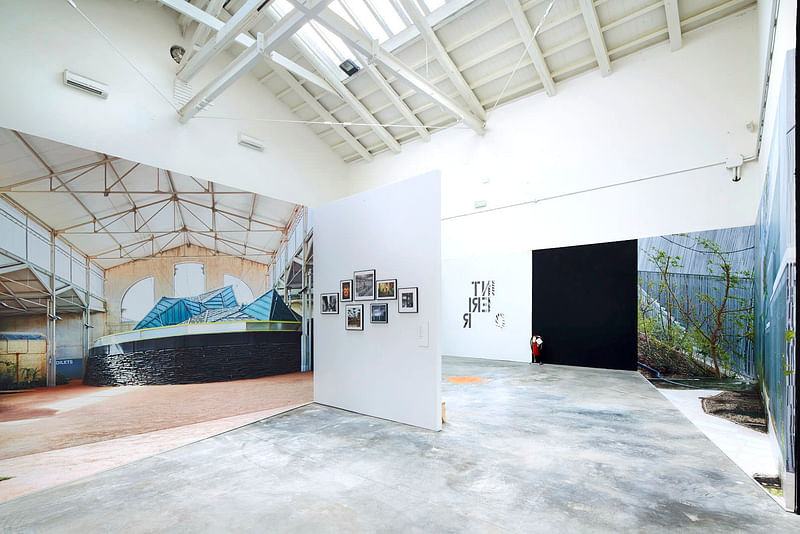
"5. Interior develops a dynamic organization that is updated by interactions with the visitors. It builds interiors within interiors and labyrinths that break down the central space of the Spanish Pavilion in the Venice Biennale Giardini. In its place, multiple routes appear for visitors to reconfigure, in such a way that the interiors cease to be isolated capsules. Different spaces can be seen from each of the Pavilion spaces, and other interiors can be seen from each interior. This exhibition is an environment where visitors can play with their surroundings. The pictures are like compasses, guiding them through a continuous experience in which they can get lost at will. The built space-time structure of this environment is one amongst many. It can be implemented in different ways in future travelling exhibitions, always retaining its basic structure as a prototypical space."
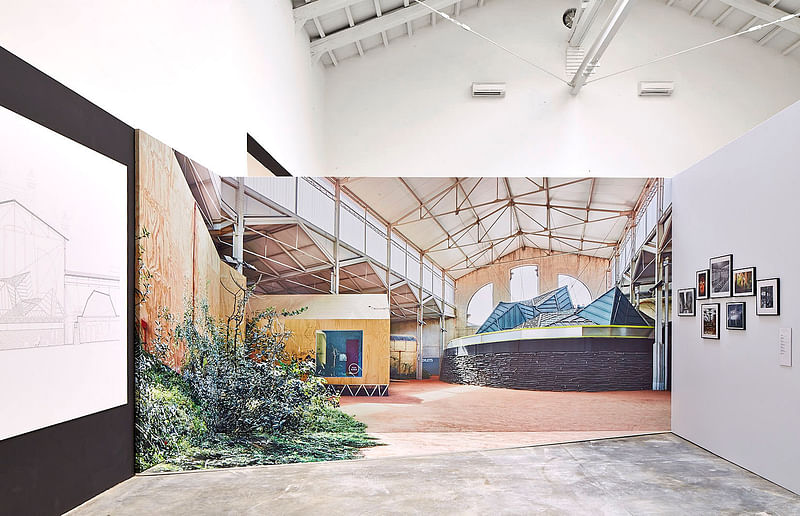
"This exhibition refers explicitly to the use of the image and the frame of the Ulm Pavilion built by Max Bill for the Baden-Württemberg State Fair in Stuttgart (1956), although the proliferation in the present case builds up a more complex environment in which a choreography of space, image, the different scales of the interiors and the visitors’ itineraries ensure a dynamic interaction in systematic movement. In addition to its algorithmic explorations, Max Bill’s Pavilion was based on the repetition of four elements in a spiral. The proposal for the Spanish Pavilion establishes a more complex structure in which the images of the twelve projects are interrelated and linked to a historical context, producing a double warp in time—an historic warp through the referenced projects and a contemporary warp through the projects on display— which generates new categories. There is no linear discourse but rather a mutual performativity."
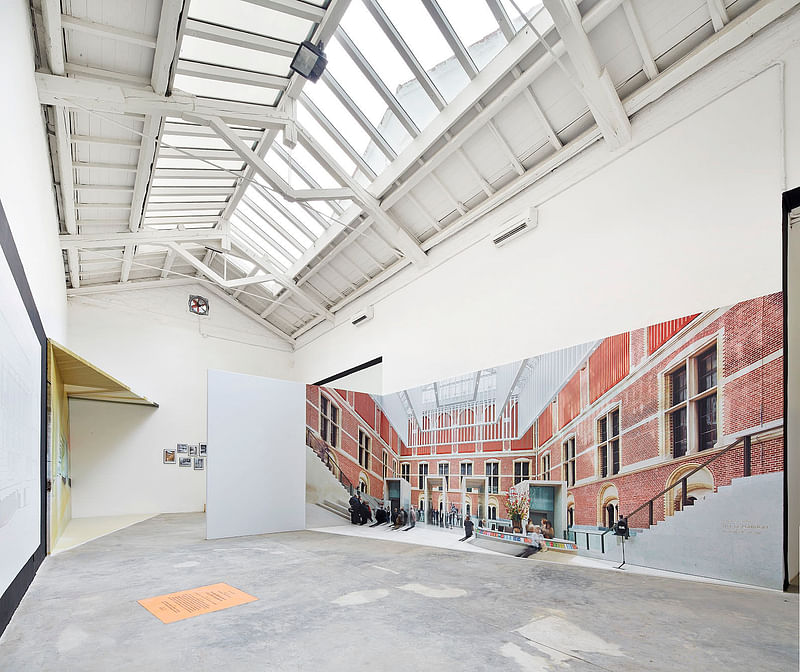
"6. In Interior, the selected projects are part of a search for a dynamic definition of fundamentals and an appropriate notion of modernity for the Mediterranean area. The contemporary architecture is multiplied by the accompanying older work which fills it with meaning and also prevents the isolation of traditions and strategies. The twelve contemporary authors find themselves multiplied by references to other modern projects. In a historical context, they create a kind of superauthor with a generic geographic relevance that can work in a global context. This “superauthor” acts as a potential facilitator who no longer works for a patient subject, but shares the responsibility for a greater, re-established evaluation.
The material exhibited here in Venice can therefore be viewed from two perspectives: from their individual specificity and from their collective potential. In each work, the designing author and the subject who experiences the work interact in an environmental system that escapes from the most orthodox modernity’s desire for an iron grip. The projects base this lax relationship on redundant formal and organizational systems that activate a diversified, open experience."
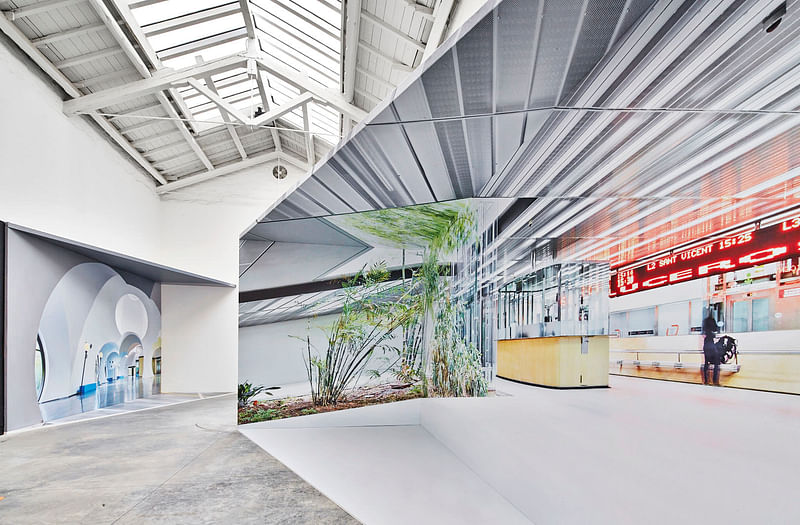
"7. Interior is ultimately a question that acts in the manner of a generative system, and is articulated as a source of interaction. Each visit adds meaning to the exhibited material, restoring it in a new relationship. The formal, typological and environmental links help to shape affective and cultural affinities in the course of the overall experience of the exhibition, which makes reference to courtyards, thermal baths and grottoes."
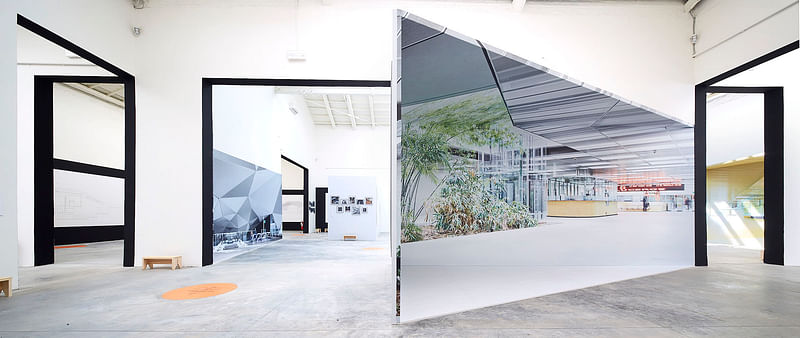
"8. Interior is an exhibition of architecture resulting from techniques and protocols that are reiterated in different ways over time. These are works in which knowledge is transferred from one scenario to another. These iterations create loops, nuancing, reformulating and taking over the basic environmental and formal organizational systems in such a way that their changes over time update the way they are expressed through new techniques.
Some interiors are the result of the manipulation of basic volumes and systematic movements of forms that remain recognizable after the spatial operation on them. Examples of this are the interiors of Langarita Navarro’s Red Bull Academy in Matadero, Madrid, Carlos Arroyo’s OostCampus in Oostkamp, Belgium, L’Atlàntida Cultural Centre in Vic (Barcelona) by Josep Llinàs, Luceros Tram Station in Alicante by Javier García-Solera and the Pablo de Olavide University Classroom and Department Building in Seville by MGM Arquitectos."

"Others configure patterns which materialize or dematerialize planes and surfaces, as in the case of Manuel Ocaña’s Casa Mediterráneo in Alicante, Churtichaga + Quadra-Salcedo’s Matadero Cinema Centre in Madrid and Ábalos+Sentkiewicz’s High-Speed Train Station in Logroño. The final group defines fields that are rearranged to constitute figurative intensities and blurred edges. It includes the Giner de los Ríos Foundation Headquarters in Madrid by amid.cero9, the Les Cols Restaurant Canopy in Olot by the RCR team, the apartment block by Álvaro Soto and Javier Maroto in Madrid and the Rijksmuseum extension by Cruz y Ortiz Arquitectos in Amsterdam. These techniques build open interiors with differentiated hybrids, new generation thermal baths, courtyards and grottoes."
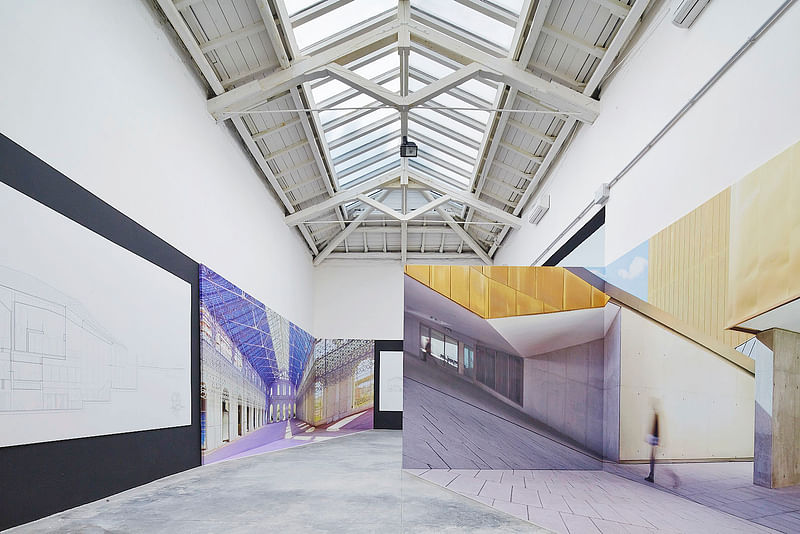
"Looking in the same direction, the expanded time frame of the projects provides a review of the history of Spanish architecture and detects kindred operations. Additions, subtractions and deformations of simple volumes are detected in Torres Blancas by Francisco Javier Sáenz de Oíza and Our Lady of Aránzazu Sanctuary by Sáenz de Oíza and Luis Laorga. Series and continuities based on additions are found in Avenida de la Luz, Barcelona and the Girasol Housing Block by José Antonio Coderch, and the Spanish Pavilion at the 1958 Brussels Expo by José Antonio Corrales and Ramón Vázquez Molezún. Groups of planimetric deformations are established in Félix Candela’s Our Lady of the Medalla Milagrosa and Alejandro de la Sota’s Maravillas’s School Sports Hall. Finally, material dissolutions can be seen in the Baluart Canopy in Majorca by José Antonio Martínez Lapeña and Elías Torres, Miguel Fisac’s Hydrographic Research Centre and Fernando Higueras’s Spanish Cultural Heritage Institute."
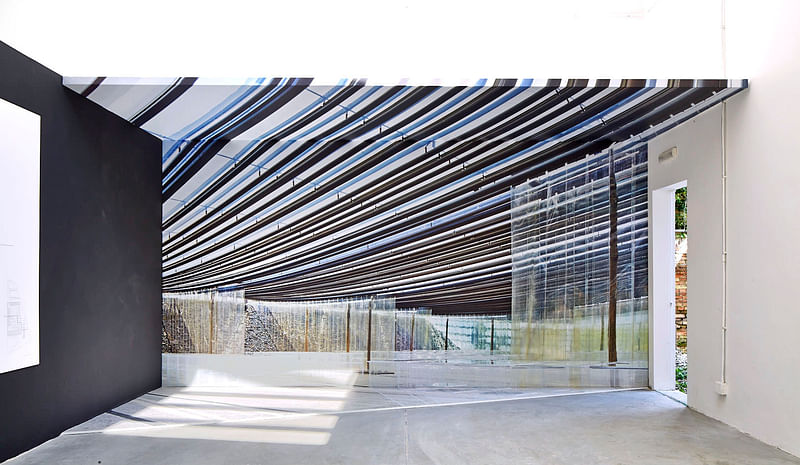
"This constellation of affinities is based on categories that were recognized and developed well before 1914: grottoes, thermal baths and courtyards are relational devices dripping with architectural intelligence. They set the basic rules for environmental assessment which restore continuity to relationships of interiority and guarantee efficient modes on the basis of which secondary level requirements can be developed."
All photos courtesy of Sio2 Arch
Click the thumbnails below for more photos.


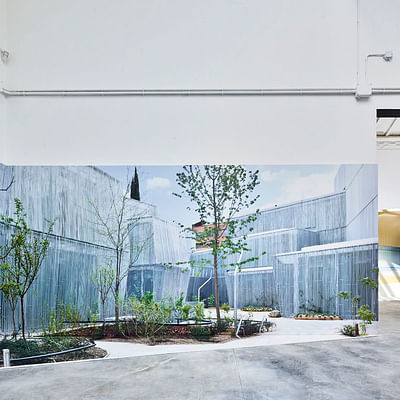
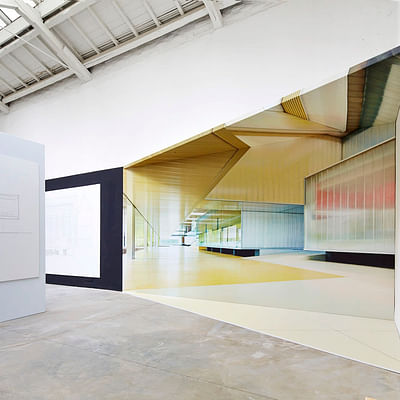

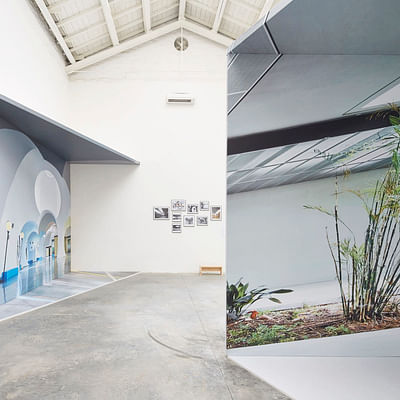
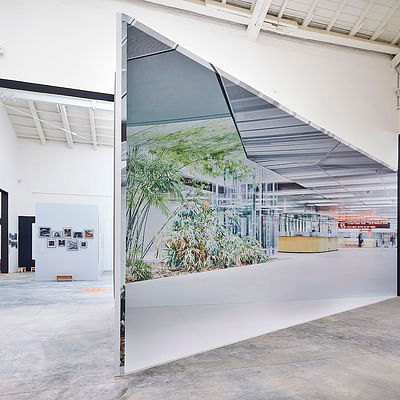


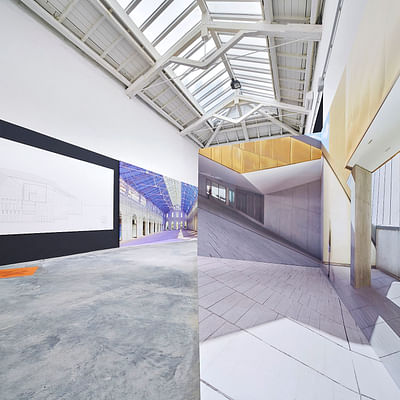


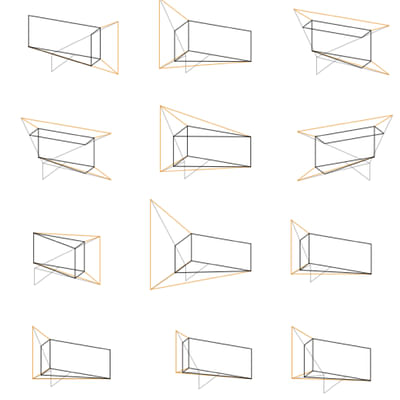

Share
0 Comments
Comment as :